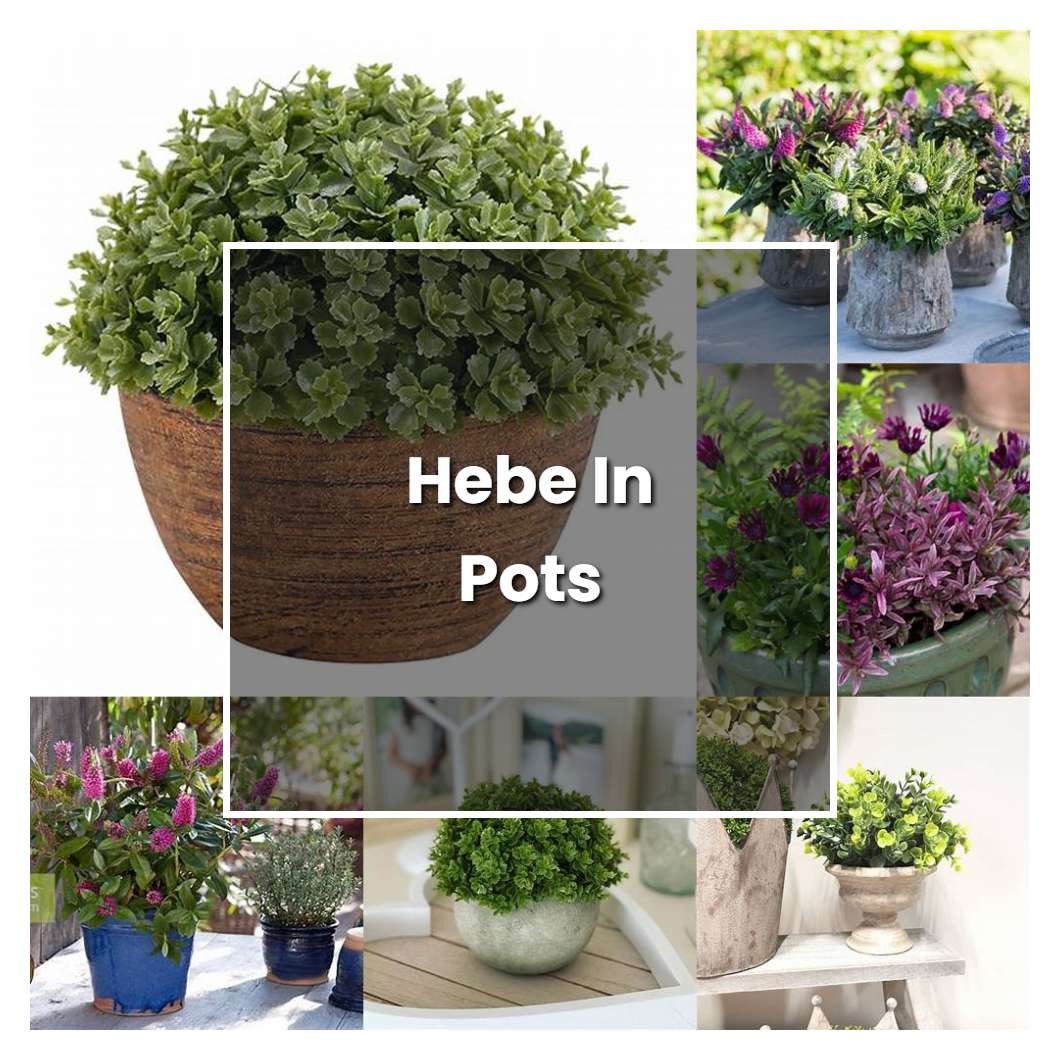Hebe in pots is a very versatile plant, able to tolerate a wide range of conditions. It is often used as a low-maintenance groundcover or as an accent plant in gardens. Hebe in pots is also a popular choice for containers and hanging baskets.

Related plant:
Hebe Veronica
Related plant:
Types Of Hebe
About soil condition, Hebe in pots needs well-drained soil, so choose a pot with drainage holes. If you're using a pot without drainage holes, be sure to add rocks or pebbles to the bottom of the pot before adding soil. This will help promote drainage and prevent your plant's roots from sitting in water, which can lead to root rot.
So, like the other plants, Hebe need sunlight to grow properly. However, since they are typically grown in pots, they may not get as much sunlight as they would if they were planted in the ground. For this reason, it is important to choose a pot that is large enough to allow the plant to get enough sunlight. If possible, place the pot in a spot where it will receive direct sunlight for at least part of the day.
The temperature conditions that are best for growing hebe in pots are those that are cool and moist. Hebe prefers cool temperatures and lots of moisture in the soil. If the conditions are too hot and dry, the hebe will not thrive.
Ideal humidity condition for this plant is around 40%. If the humidity drops too low, the leaves will start to turn brown and drop off. Higher humidity levels are also not good for the plant as it can cause the leaves to become yellow and fall off.
For the fertilizer, this type of plant does best with a balanced fertilizer that is applied monthly. For the roots, it is best to keep the roots moist but not soggy. If the roots are too wet, they will rot. If the roots are too dry, the plant will wilt.
Pruning is an important part of keeping your hebe healthy and looking its best. You should prune your hebe in early spring, before new growth begins. Cut away any dead or diseased branches, and trim back any overgrown or leggy branches. Hebes can be pruned quite hard, so don't be afraid to take off a lot of growth if necessary.
Propagation is the process of creating new plants from existing ones. Hebe can be propagated easily from stem cuttings taken from new growth in spring or summer. The cuttings should be around 10cm long and placed in a pot of moistened potting mix. After a few weeks, the cuttings will have rooted and can be transplanted into individual pots.
Usually, the plant growth rate is fast, however, it can be slow to grow if the plant is not receiving enough sunlight. Also, if the pot does not have good drainage, the plant will not be able to absorb the nutrients it needs from the soil and will not grow as quickly.
Common problems for this kind of plant are mainly due to watering. Either too much or too little water can cause problems. Overwatering can lead to root rot, while under watering can cause the leaves to turn brown and drop off. Another common problem is aphids, which can be controlled with an insecticide.
Source:
Hebe 'Karo Golden Esk' | Landscape Plants - Oregon State
Boxwood Hebe - Hebe buxifolia 'Nana' - PNW Plants
Managing Pests in Gardens: Trees and Shrubs: HebeUC IPM - ucanr.edu
